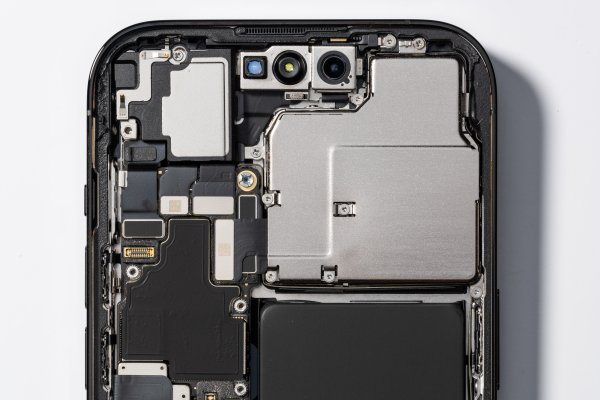The 90s were a time of wacky and wild trends. From Furbies to Tamagotchis, it was an era of colorful fads—especially when it came to electronics. For those of us who love seeing how things work, amidst the vibrant chaos, there emerged a clear obsession that truly caught the eye: transparent electronics.
In the midst of the so-called clear craze, not only did fizzy drinks go see-through, electronic devices of the time got the same treatment. Suddenly, their engineering and inner workings were no longer hidden. Sure, the invention of plexiglass had inspired the minds of industrial designers for decades—the transparent Pontiac Deluxe Six 1939 Ghost Sedan shows this impressively—but in the 90s, translucent and see-through cases came to household items.
From transparent landline phones that revealed internal weights for balance and the separate wires in the cable connecting to the headset, to semi-transparent N64 versions and see-through pagers, the 90s were all about tech standing out. And of course, we would be remiss to not mention Apple’s first iMac. Back in 1998, the fruit company was all about “Think different.” Introducing the new product, Steve Jobs called out computer design as “ugly” compared to the translucent look of the iMac G3. “You’ve got to see this thing in person,” a clearly excited Jobs exclaimed. For a while, Apple was all in on translucent design, but in the early 2000s, the company moved on.

Being born in the 90s, I’ve missed the biggest waves of the crystal craze. But as the proud owner of a translucent blue Gameboy Advance, I certainly get the fascination with tech you can look into. The glowing LED and the intricate circuit board are no longer hidden away but instead technological wonders to be fascinated by. Want to know how the buttons work? Just take a look, no disassembly needed! Even if it was and is a gimmick in most cases, seeing the inside creates a different relationship to the devices we use.
When iFixit started tearing down devices in the late aughts, the clear craze was long gone and electronic devices had returned to being black boxes and mirrors encased in aluminum and plastics. Sometimes, transparency showed up as a gimmick like with the LG GD900 Crystal, but transparent tech mostly stayed in prisons.
This was a pretty untenable situation for iFixit. We love opening up devices and studying internals like a work of art. Folks around here are weird like that. That’s why iFixit started offering transparent rear panels for the newly released iPhone 4 in 2011 and later for the 4S. Back then, replacing iPhone rear panels was a bit easier than it is nowadays.


And although we couldn’t convince Apple to go back to transparent, in the last few years, transparent and translucent tech has had somewhat of a revival. There are those who mod their iPhone 14 to feature a transparent rear panel or transparentize their PlayStation with alternative plates. A certain company called Nothing even made the transparent style their distinguishing feature, although you do not necessarily get what you see.
Transparent product design is not just a trend that comes and goes in waves. It is the appreciation of what makes the machine tick and the parts that form the whole. It’s seeing that technology is not magic but deliberate decisions and problem solving. That’s why the new iFixit Fast Charger USB-C AC Adapter lets you look inside. You shouldn’t touch the capacitors, but what’s going on in there isn’t a mystery or magic but physics and engineering. And that’s just transparently cool.






2 Комментариев
Luv it. More. More.
Robert Ameeti - Ответить
Where is the iFixit tear-down for your fast charger? I would think you would treat your own products just like anyone else’s…
AndrewNJohnson - Ответить